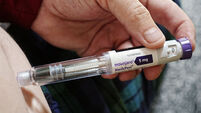Scientists make salmonella breakthrough
Scientists working on a cure for salmonella have made a major breakthrough in understanding how the food-poisoning bug makes people ill.
Studies of the complete genome sequence of the disease have identified which genes are activated during infection.
The research, published in this month’s Molecular Microbiology Journal, could lead the way for scientists working on other potentially fatal diseases including malaria, HIV and tuberculosis.
Dr Jay Hinton, of the Institute of Food Research (IFR), said that prior to the publication of the complete genome sequence of salmonella last year, little was known about how the bacteria causes disease.
“With the sequencing of the entire genome, we suddenly had all 4,644 genes to study but realised we didn’t understand the function of a third of them,” he said.
“This is the first time anyone has created a complete picture of gene expression for any organism during infection.
“It exposes which genes are the real killers. This new technique can be applied to any infectious disease.”
Dr Hinton, who led the joint study by the IFR and the Karolinska Institute in Sweden, said disease-causing genes could now be targeted in the development of new vaccines and antibiotics.
Salmonella has become increasingly resistant to antibiotics and now kills more people in the West than any other food-borne pathogen.
More than 2,200 strains of salmonella have been identified since 1885. The most common is salmonella typhimurium, which causes food poisoning mainly through the consumption of raw or undercooked contaminated food of animal origin.














